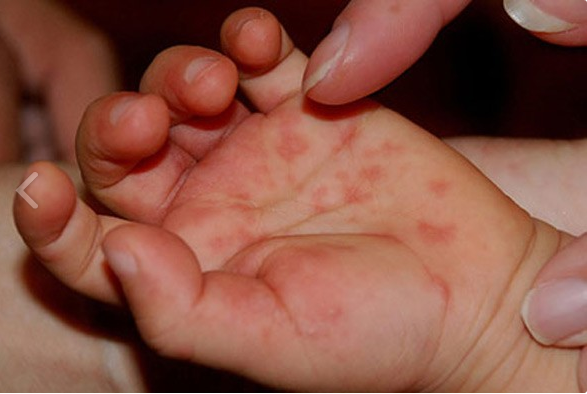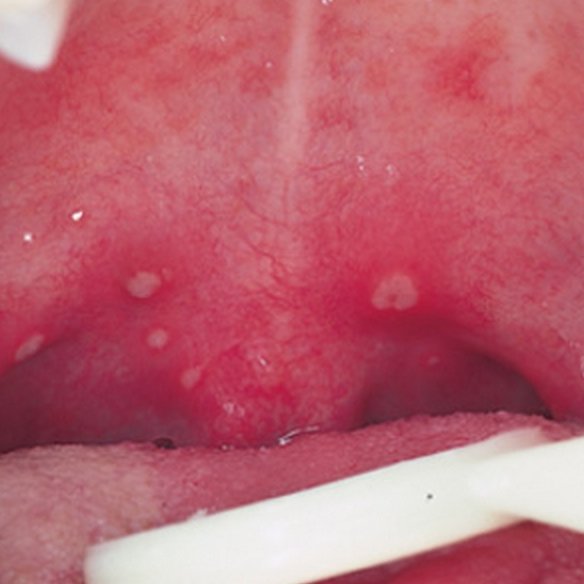Summer is often linked to fun. However, it can also be a season of illness, especially when you consider the number of warm month-specific illnesses that occur in children, which are compounded by our little ones’ love of playing in pools and overgrowth, areas that are often the breeding grounds for viruses and bacteria.
Dr. Eisel Go Palestroque, a board-certified pediatrician at Vista Medical Center who moved to in Beijing in November 2016, cautions parents to be on the lookout for common summer diseases. Dr. Palestroque got his medical degree and license in his home country, the Philippines, back in 1995. After finishing his pediatric residency training, he opened a private practice in Manila, the Philippines’ capital city, from 2000-2013. He then took a job in Shanghai, before a brief stint back at home, and then moved to Beijing.

According to Dr. Palestroque, there’s a higher prevalence of common diseases among children in summer compared to other seasons. Below are the most common ones that parents should keep a lookout for:
1. Foodborne Illnesses (Food Poisoning)
The incidents of foodborne illnesses spike during the summer season because bacteria multiply much faster in hotter weather.
Symptoms: Vomiting, diarrhea, abdominal pain, dehydration, and fever. The major concern about foodborne illness (poisoning) is dehydration (kids are prone to becoming dehydrated faster than adults).
Treatment: Oral rehydration solution for the replacement of water and electrolytes in mild cases and intravenous (IV) treatment to hydrate the patient for a few hours for severe cases.
Dr. Palestroque said, “Usually, we advise parents that when they see symptoms of food poisoning, especially vomiting and diarrhea a few hours after eating something, they should visit a physician immediately for assessment of possible dehydration of the child. Usually, this is easily treated if properly diagnosed immediately.”
Advice to parents: Keep food refrigerated to preserve it. Always make sure that the drinking water is clean or sterile. When heading out for picnics, place the food in an ice cooler or use ice packs to chill the food. Food that is not kept cool should not stand for more than 1-2 hours, especially when in temperatures above 35 degrees Celsius.

2. Swimmer’s Ear
Swimmer’s ear, or otitis externa, is the inflammation or swelling of the ear canal and is most commonly caused by a bacterial infection. When children go swimming, they often don’t notice if water gets stuck in their ears.
Symptoms: Itching, discharge, severe pain, and tenderness in the ear, especially when moving the head or when pulling the earlobe; a foul-smelling, yellowish discharge can be seen from the ear which can cause muffled or decreased hearing due to blockage of the ear canal.
“We advise parents to dry ears thoroughly but gently after swimming using a cotton towel or a dry soft tissue as first aid treatment. If after drying the child still feels like there’s water inside, tilt their head to the side and pull the ear lobe gently to help drain the water out. If the child still feels that there’s still water inside then they have to go to a physician for a check up and treatment,” said Dr. Palestroque.
Advice to parents: Parents are cautioned against using a cotton swab to dry the ear canal because of the possibility of causing abrasions of the skin within the ear and the risk of pushing bacteria further in is much higher.

3. Viral Infections
Hand-Foot-and-Mouth Disease (HFMD)
The most common viral infection is hand-foot-and-mouth disease. Vista has seen a rise in the number of cases in this type of infection since the beginning of July. The virus is self-limiting and symptoms usually last for about seven days often with mild symptoms that don’t require specialized treatment.
Symptoms: Fever, sore throat, drooling (in some cases, even the young ones around 3-4 years old), mouth sores on the lips and tongue, decreased appetite or refusal to eat, rashes with blisters on hands and feet as well as sometimes in the upper thigh and buttocks area after a few days.
“Usually, parents come to the clinic because of the incidence of fever and decreased appetite. This is a viral infection and as with most viral infections, is self-limiting, meaning that there is no specific treatment and that supportive treatment will usually suffice. We suggest giving the child small, frequent amounts of cold soft foods and fluids or rehydrating solutions, pain relievers for mouth ulcers, and in some cases wherein children really cannot eat and drink, IV treatment is necessary to rehydrate the child,” said Dr. Palestroque.

Herpangina
Herpangina is also a viral infection and is similar to HFMD disease.
Symptoms: Fever, sore throat, drooling, rashes (oral ulcers) concentrated in the mouth area, none on the hands, feet, or other parts of the body. The ulcers often occur at the back of the mouth, which means that they’re often hard to see to the untrained eye. The ulcers cause pain during swallowing which results in a decreased appetite or dehydration, which might require an IV treatment similar to what is needed for HFMD.
Both illnesses are transmitted through saliva, mucus from the nose, traces of stool (fecal-oral route), or direct contact with an infected child. Children under 10 years of age are more likely than adolescents or adults to get one of the two diseases.
“The good thing about viral infections is that they are often easily treatable if the parents/guardians are observant and take the child to the physician soon after spotting symptoms. Complications are very rare for children with competent immune systems, and they tend to recover quickly,” said Dr. Palestroque.
Advice to parents: HFMD and Herpangina are usually entirely preventable with frequent hand washing using soap and water. Parents should teach their children to wash their hands often, especially after using the bathroom. It is also important to keep the home clean and to disinfect tabletops, toys, and other things that children might touch.


This post is paid for by Vista Medical Center.
Photos: Uni You, picphotos.net, yahooimages.com, sunfm.co.nz


